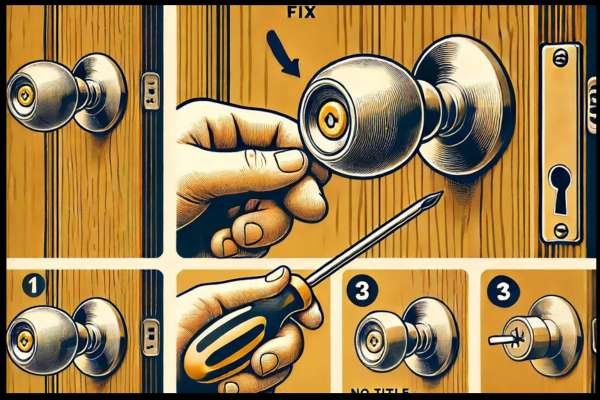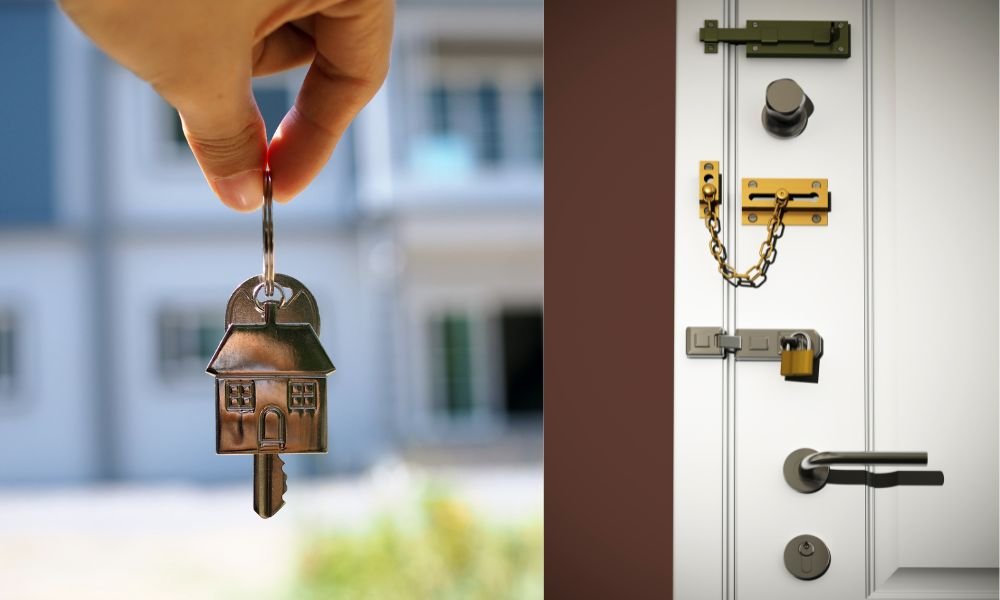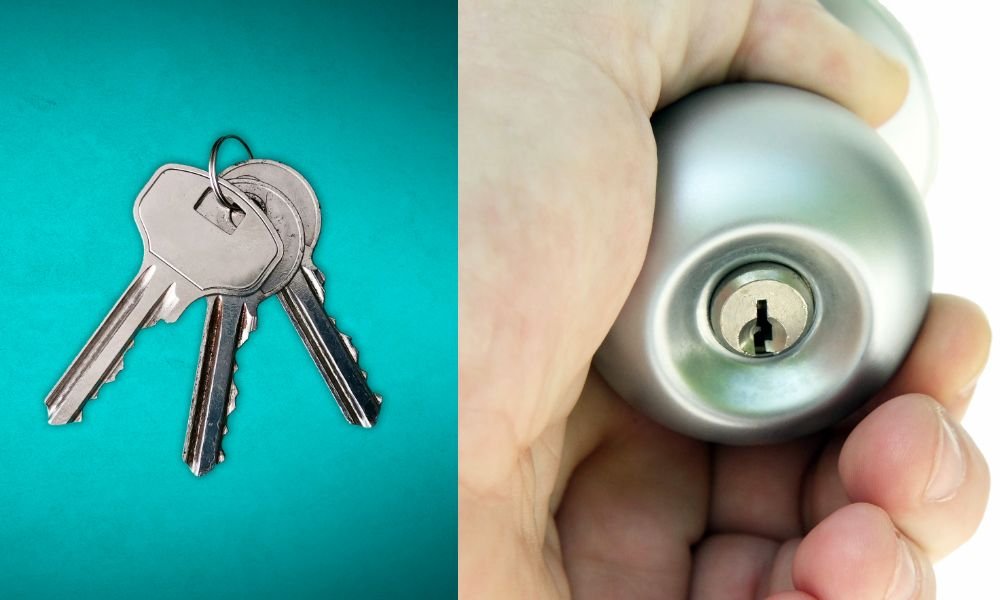Fixing a loose door knob boosts both security and functionality. Gather your basic tools; a screwdriver and Allen wrench should suffice. First, identify why the knob wobbles. Tighten the screws on the rose plate using the screwdriver. If present, adjust the set screw with your Allen wrench. Test the knob’s operation by turning it several times. Is it still loose? Apply minimal lubricant to ease the mechanism. Ensure the handle aligns properly with its components. A final check should confirm the door operates smoothly, enhancing both security and ease of use. This detailed guide will provide you with clear, step-by-step instructions about how to Fix a Loose Door Knob tighten your door knob and ensure your gate functions perfectly.
Tools and Materials Needed
To tighten a loose door handle efficiently, ensure you have the appropriate equipment. Choose the right type of screwdriver based on your knob’s screws. An Allen wrench may be needed for certain models with specific fastening requirements. Consider having lubricant handy for a smoother mechanism and pliers for extra grip on tough screws.
Tools List:
- Screwdriver
- Allen wrench
- Lubricant (optional)
- Pliers
Understanding the Different Types
Door knobs are not just functional; they also contribute to the door’s overall aesthetic. It’s important to recognize the different types available to ensure proper maintenance and functionality.
A. Cylindrical Knobs:
These knobs are the most common type found in residential settings. They are secured with screws located at the base of the handle. Easy to install and replace, cylindrical knobs are practical for everyday use in most interior doors.
B. Mortise Knobs:
Often seen in older or commercial properties, mortise knobs are part of a more complex locking mechanism. The entire lock system, including the handle, is installed inside a pocket (mortise) cut into the door, making it more secure and durable.
C. Dummy Knobs
Used solely for decorative purposes, dummy knobs are stationary and do not turn or function as a locking mechanism. They are typically installed on closet doors or other interior doors where a latch is not necessary.
Diagnosing the Problem
When addressing the above, start by diagnosing the issue. First, check if the problem stems from loose screws or a faulty mechanism. Rotate the knob gently and observe any movement in the rose plate or spindle. If screws appear loose, tightening them may resolve the issue. However, if the handle turns without engaging the latch, the internal components could be misaligned or worn out. For knobs with set screws, ensure they are secure and correctly adjusted. Accurately identifying the root cause is crucial for effective repair, preventing further damage, and maintaining door functionality. This initial assessment guides your repair strategy, ensuring a targeted and successful fix.
Step-by-Step Guide to Tightening

Discover a straightforward method for securing a wobbly door knob. This guide provides detailed steps to ensure your door’s functionality and safety. Follow each instruction to transform it into a firm, reliable gate component.
- Tighten the Screws on the Rose Plate: Focus on the rose plate, which is the round backing behind the knob. Use your screwdriver to carefully tighten the screws in a clockwise direction. Ensure they are snug but be cautious not to overtighten, which can strip the screws and damage the handle.
- Adjust the Set Screw: Check for a set screw, which is typically located on the side or base of the handle. Using an Allen wrench, tighten this screw to firmly secure the knob to its spindle, enhancing the stability and function of the doorknob.
- Lubricate the Lock Mechanism: If the knob feels rough when turned or remains loose, a light application of lubricant can make a difference. Spray a small amount onto the mechanism to loosen any stuck parts and promote smoother operation.
- Realign the Knob and Spindle: In cases where the handle is still loose, realignment may be necessary. Gently pull the handle toward you and rotate it to align properly with the spindle and internal components. Tighten again if necessary.
- Check the Entire Door Mechanism: Examine other parts of the gate, such as the latch and strike plate. Sometimes, these components may loosen, affecting the knob’s stability. Tighten any loose hardware to ensure the entire gate functions correctly.
Final Testing and Preventative Maintenance Tips
Once the door handle is secured, conduct a final test to confirm stability and smooth operation. Open and close the gate several times, checking for any wobbling or sticking. If the knob functions properly, routine maintenance is the next step. Regularly inspect and tighten screws to avoid future loosening. Apply lubricant annually to ensure mechanisms move freely without resistance. Also, periodically verify the alignment of the knob with the spindle and strike plate. These preventive measures extend the life of your door hardware, maintaining optimal performance and security. Adhering to these tips reduces the need for frequent repairs, keeping your entryways in top condition.
Conclusion
Maintaining your door hardware is a crucial aspect of household management. Adhering to the provided guidelines allows for effective resolution of loose door knobs, ensuring ongoing functionality and security. Implementing regular inspections and conducting timely minor adjustments can greatly prolong the durability of your door’s components. This proactive approach not only preserves the integrity of the gate but also saves considerable time and effort by preventing more complex issues in the future. Keep your doors in optimal condition to enhance both safety and ease of use throughout your home.



